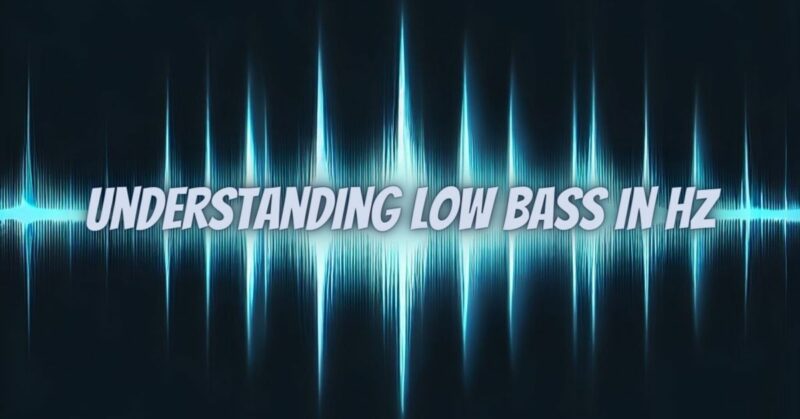Low bass frequencies are the foundation upon which the rich tapestry of sound is woven. Often heard but seldom fully understood, these sonic depths encompass a spectrum that extends far below the range of typical human hearing. In this article, we will embark on a journey to comprehend the world of low bass in Hz, exploring its significance, its impact on music and audio, and the technologies that make its experience possible.
Defining Low Bass Frequencies
Low bass frequencies refer to the range of sounds that dwell at the lower end of the audible spectrum, typically below 100Hz. These frequencies are characterized by their deep, resonant quality and are felt as vibrations as much as they are heard. Understanding the different segments of low bass is essential for appreciating their unique contributions:
- Sub-Bass Frequencies (20Hz – 60Hz): This subsonic range includes frequencies that begin at 20Hz and extend up to 60Hz. Sub-bass frequencies are powerful and visceral, often felt more than heard. They are responsible for the earth-shaking thumps and rumbles that drive genres like electronic dance music (EDM) and dubstep.
- Deep Bass Frequencies (60Hz – 100Hz): Falling between 60Hz and 100Hz, deep bass frequencies strike a balance between audibility and power. They add warmth and presence to music and are crucial for creating emotional impact and rhythmic foundations in various genres.
Significance of Low Bass in Hz
- Emotional Resonance: Low bass frequencies have the unique ability to evoke deep emotional responses. Whether it’s the throbbing bassline in a love ballad or the explosive sub-bass drop in a suspenseful soundtrack, these frequencies can enhance the emotional depth of music and storytelling.
- Physical Connection: The vibrations generated by low bass frequencies create a profound physical connection between sound and listener. This tactile experience can be spine-tingling at live concerts or create an immersive listening experience in well-designed home audio systems.
- Artistic Expression: Musicians and sound artists use low bass frequencies as a canvas for creativity. From the subtle double bass in classical music to the thunderous sub-bass in EDM, these frequencies allow for artistic expression across a wide range of genres.
Technological Considerations
- Speaker and Subwoofer Design: High-quality subwoofers and speaker systems are engineered to accurately reproduce low bass frequencies. They are equipped to handle the power and vibrations associated with deep bass, ensuring a clean and impactful sound.
- Equalization (EQ): Sound engineers employ EQ techniques to balance low bass frequencies within a mix. Proper EQing ensures that the bass enhances the music without overwhelming it.
- Compression and Limiting: Compression and limiting are utilized to control the dynamic range of low bass frequencies, preventing distortion and ensuring that they maintain a consistent and powerful presence in the mix.
Understanding low bass in Hz is to unveil a world of sonic richness, power, and emotional depth. These frequencies are the heartbeat of music, the rumble of suspense in cinema, and the driving force in our favorite tunes. As technology continues to advance and creative boundaries are pushed, the significance of low bass frequencies remains undeniable, continuing to shape the way we experience and appreciate sound.


